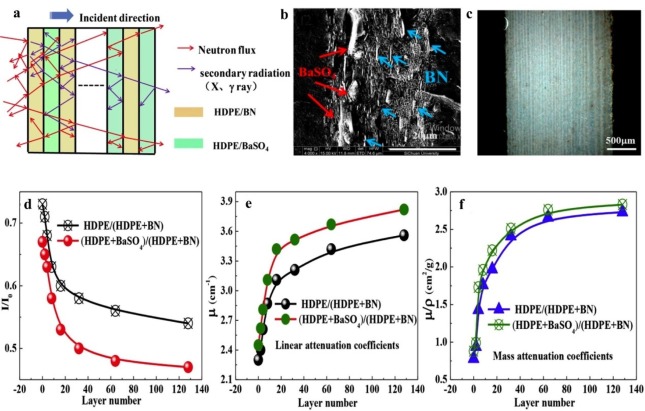
# The Mushroom Cloud of the First Hydrogen Bomb: A Profound Exploration of Nuclear Physics and Contemporary Warfare
We’ve all witnessed the memorable imagery: a serene, clear azure sky abruptly engulfed by a colossal mushroom cloud, succeeded by a thunderous explosion. These bomb tests, originating from decades ago, symbolize humanity’s venture into the daunting realm of nuclear arms. While much of the visual documentation seems to belong to a bygone era, the destructive capability of contemporary nuclear weapons has only intensified, advancing far beyond the devastation observed in Hiroshima or Nagasaki. At present, a mistake or failure in a nuclear missile launch system could trigger an assault resulting in millions of fatalities — exceeding the total casualties of World War I entirely.
But how did these weaponry evolve into such destructive forces? How can a warhead, measuring only a few feet in length, possess the capacity to annihilate millions and transform entire cities beyond recognition? This article explores the science behind nuclear weapons, their progression over the years, and the dire aftermath of a nuclear weapon detonation.
## How Do Nukes Function?
Nuclear weapons draw their destructive force from the energy enveloped within the nucleus of an atom. This energy can be exploited through two principal nuclear processes: **fission** and **fusion**.
### Nuclear Fission
Nuclear fission is the process of separating a heavy atomic nucleus into smaller fragments. Specific isotopes of heavy metals, like Uranium-235 and Plutonium-239, are inherently unstable, rendering them ideal for this process. When a neutron collides with the nucleus of an atom — particularly Uranium-235 — the nucleus divides, resulting in smaller atoms, releasing energy, and discharging more neutrons in the process. These newly released neutrons then collide with other nuclei, instigating further fission reactions in a quickly escalating chain reaction, releasing colossal amounts of energy virtually instantaneously. This ever-expanding chain of reactions forms the foundation of the immense power associated with fission-based nuclear weapons.
### Nuclear Fusion
Conversely, **nuclear fusion** involves the merging of two small atomic nuclei, usually isotopes of hydrogen like deuterium and tritium, to form a larger nucleus, commonly a helium isotope. This phenomenon, occurring on a cosmic scale within stars such as our sun, also generates a considerable amount of energy. Fusion demands extremely high temperatures — in the millions of degrees — to overcome the inherent repulsion among positively charged atomic nuclei. While fusion also releases neutrons capable of sparking additional reactions, it generates a significantly larger yield than fission, making it the core mechanism for even more formidable weapons.
## The Progression of Nuclear Weapons
The progression of nuclear weapons can be categorized into two primary periods: **atomic bombs**, which depend on nuclear fission, and **hydrogen bombs**, which incorporate both fusion and fission reactions.
### The Atomic Bomb
The atomic bomb, which solely relies on nuclear fission, was the initial variety of nuclear weapon ever developed. These bombs were notoriously employed during World War II in Hiroshima and Nagasaki, culminating in unparalleled horror and devastation. The bombs dropped on these cities unleashed energy estimated at approximately 15,000 and 21,000 tons of TNT, respectively. Despite their “rudimentary” technology by contemporary benchmarks, the overwhelming force hidden within merely a few kilograms of radioactive fuel obliterated entire urban areas.
### The Hydrogen Bomb
Subsequent to World War II advancements led to the development of the hydrogen bomb (also referred to as a **thermonuclear bomb**), which utilizes both nuclear fusion and fission. Hydrogen bombs vastly eclipsed atomic bombs in terms of destructive capability, with their yield soaring into the multi-megaton range, effectively able to generate explosions thousands of times more powerful than those in Hiroshima and Nagasaki. Upon detonation, hydrogen bombs emit a flash of light more brilliant than the sun, alongside a heat wave potent enough to incinerate materials tens of kilometers away.
### Modern Nuclear Weapons
Contemporary nuclear arms integrate both chemical explosives, nuclear fission, and nuclear fusion in intricate configurations to maximize their efficacy and destructive potential. The cornerstone of these modern designs is a two-stage process comprising an initial **primary fission stage** followed by a **secondary fusion stage**, with each amplifying the destructive force.
Modern warheads implement advanced designs to compress fissile materials such as plutonium using sophisticated chemical explosives, achieving a “critical mass” adequate to sustain fission. Concurrently, high-energy neutrons released during fusion reactions stimulate additional fission reactions, engendering a mutually reinforcing cycle of devastation.
## What Occurs During a Nuclear Launch?
The consequences of a nuclear explosion encompass the immediate blast, radiation, and the long-lasting environmental and societal ramifications. The instantaneous destruction wrought by a nuclear detonation is assessed not only in terms of the psychological shockwave or mushroom cloud visuals but crucially, in the ensuing human and ecological catastrophe.
### The Immediate Blast and Thermal Effects
Approximately 35% of the energy from a nuclear detonation is emitted as **thermal radiation**. In a